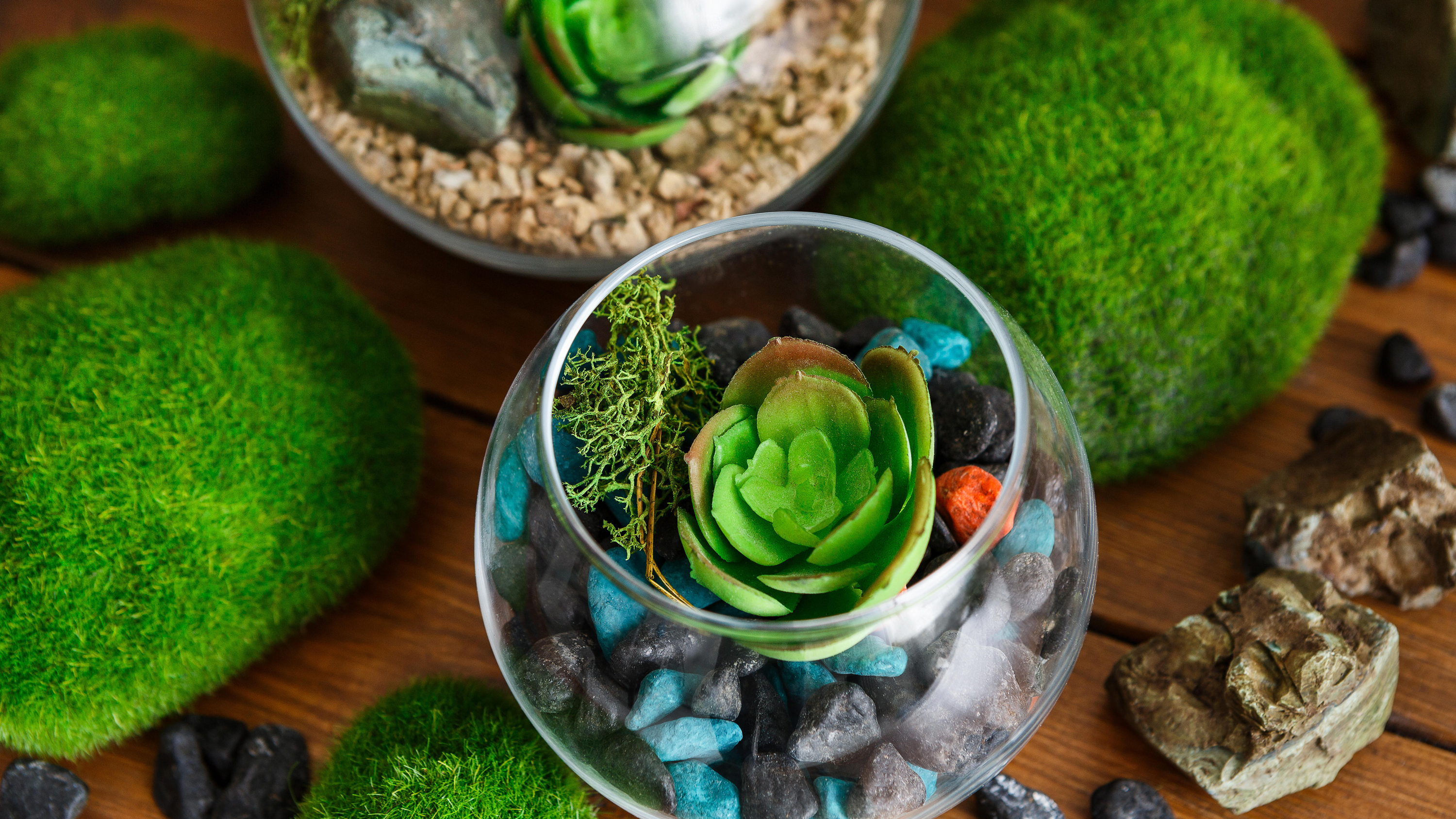Growing moss indoors is easy – especially with the help of James Wong's top tips
Moss is a popular addition to indoor terrariums and is usually trouble-free, but you do need to know a few things about growing it to have success

If you're experimenting with growing moss indoors, you need gardener and presenter James Wong's top tips to succeed, because moss is unlike any other plant you'll be growing at home. Moss is an all-season, low-maintenance delight that indoor gardeners the world over are beginning to embrace. It's mostly very easy to grow, but does have a few special growing conditions for best results.
Moss is a versatile addition to your indoor garden ideas – here's how to make sure it thrives, according to James.
1. Choose your moss type carefully

The biggest challenge comes at the very beginning when sourcing moss. As James explains in a Guardian article, 'In Japan, there are many specialist nurseries dedicated entirely to moss cultivars.' In other parts of the world, the only moss you're likely to see is on top of roofs and in the cracks of pavements.
If you live in a temperate climate, you may be tempted to just take some of that readily available moss home with you. James advises against this: 'You can’t simply gather bits of moss from garage roofs and garden paths and expect them to work in terrariums. They will die in a few weeks. This is because most temperate mosses either need low temperatures, extremely high air movement or a dormancy period (sometimes all three) to survive.'
Instead, you'll have more success if you order your moss from specialist growers (sites like Etsy often sell moss) – recommended species for beginners are Silver moss Bryum argenteum and common cord-moss Funaria hygrometrica.
Mosses also work well with a range of the best indoor plants, especially bonsai trees and terrariums tropicals.
2. Give your moss a chance to establish

If you're planting up your moss in a terrarium, it's a good idea not to plant it straight in there. Instead, James's tip is to 'sit your tray in an area of full sun to establish. Once bedded in over winter, the moss garden will be a drought-tolerant, low-maintenance feature that will last for years.' Mosses that are planted straight into a damp, shady environment won't live as long.
3. Don't fuss with layers of soil

You often see people fussing with layers of different growing media when planting their mosses, adding charcoal to sand or pebbles. This isn't necessary, and James recommends either buying bonsai soil mix, which is clay-like, or digging into the substrate of your garden and using the clay-heavy soil from there to plant up your moss. It really doesn't need much more in terms of nutrition.
4. Mist your indoor moss regularly
As a gardener, you'll already know that watering plants is one of the most important aspects of caring for them. This is equally true of moss. Although mosses are drought-tolerant, they thrive in wet conditions. As James explains, 'Mosses are an ancient group of plants that don’t follow the rules of other garden species. Their growth rate isn’t so much determined by light and heat, but by the availability of moisture.' So, mist your moss at least twice a week, but avoid soaking it too much in water or it could grow mold.
Armed with this knowledge, you should have no trouble starting your own mossarium.
Anna writes about interior design and gardening. Her work has appeared in Homes & Gardens, Livingetc, and many other publications. She is an experienced outdoor and indoor gardener and has a passion for growing roses and Japanese maples in her outside space.
